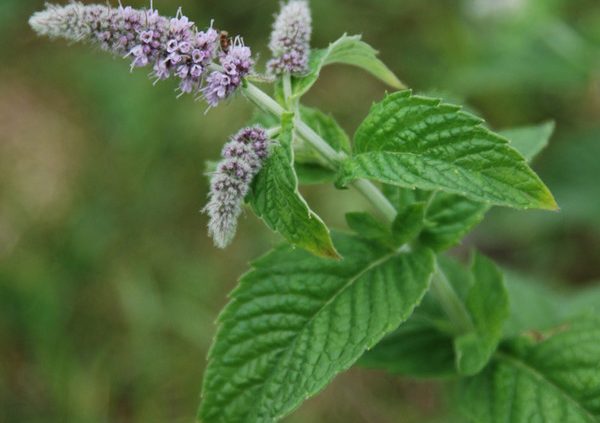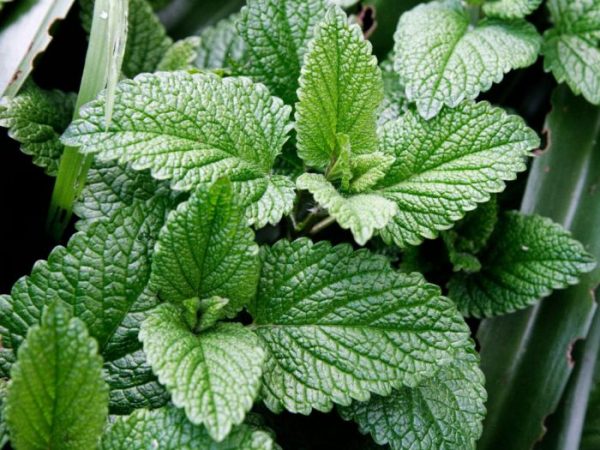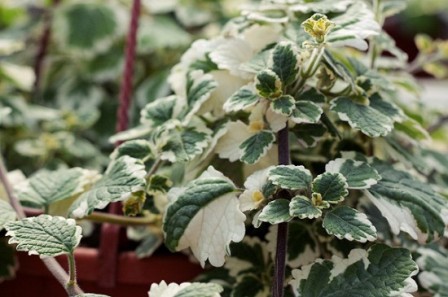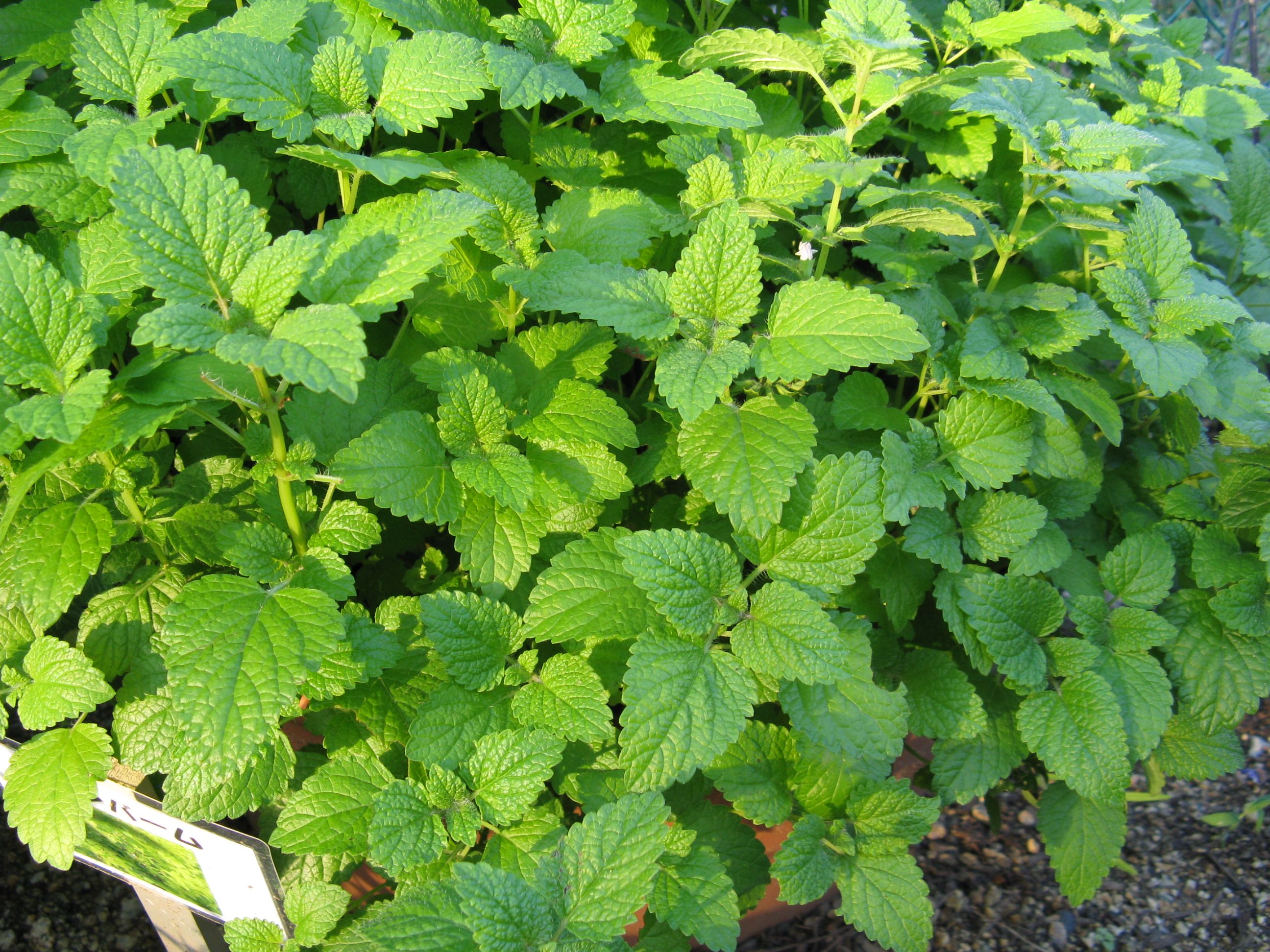What are the types of mint: description of varieties
Content
Description of mint
Peppermint is known primarily as a sedative for the nervous system. After an excitement or just a hard day at work, it is good to have a cup of tea with a refreshing mint aroma. But only the aroma should come from the leaf, often teas are flavored with menthol, obtained by the synthesis of chemicals that have nothing to do with the plant. Medicines for the gastrointestinal tract often contain mint because they have a choleretic effect. A pronounced diuretic effect helps to rid the body of excess fluid, to maintain water-salt metabolism for those who consume a lot of table salt. It is said that too much peppermint tea can even lead to dehydration.
Mint is taken for colds, many infectious, nervous, when you need to get rid of headaches or nausea. The analgesic, anti-inflammatory and sedative properties of mint have found their application not only in traditional medicine, but in traditional medicine, in cosmetology and perfumery. It is a part of ointments and creams, it is used in skin and hair care, for rejuvenating procedures and relaxation.
A perennial plant of the labiate family is so unpretentious that it grows on all types of soils in countries with a temperate climate. It does not require feeding or special care, it grows in sunny areas and in the shade, only moderate moisture is enough, whether it be artificial watering or a rare rain. Mint is easy to dilute - for this you need to plant one plant in your garden, and then the creeping roots will do their job. It multiplies by dividing the roots, cuttings, even by rooting leaves. It is advised to protect the site with mint by burying a sheet of plastic, slate, roofing material in the ground so that the roots do not grow beyond its limits. You can harvest the leaves in the first year of the plant's life.
There are many varieties of mint: at least 25 varieties and 10 natural hybrids are known. These are mainly herbaceous plants with a flexible stem, small flowers collected in inflorescences. They grow in height from 30 cm to 1 m, bloom almost all summer - from June to August. Leaves begin to collect from June, but the greatest amount of essential oils in the stems and leaves is concentrated towards the end of flowering.
At home, use fresh herbs or dried. You need to dry it, like all greens in general, spreading it out in a thin layer on special trays (trays, dishes) in ventilated rooms or shaded places. Store dry herb in glass or ceramic containers with tight lids.
All About Peppermint Video
Informational video about peppermint and its properties.
Wild mint
Wild mint is also called field mint, meadow mint, oregano or mother mint. It grows around water bodies, in meadows, in woodlands.Its aroma is only slightly softer, more delicate than that of peppermint, because its essential oil contains menthol, carvone, citral, geraniol and other beneficial and highly aromatic substances. It is often used in cooking - it is wonderfully suitable for fish, meat dishes and sweet desserts. Wild mint is added to salads and drinks, it is used to flavor sweets, sauces, soups, and alcoholic cocktails. The combination of different ingredients allows its aroma to manifest itself from different sides and sparkle with all its colors.
Since ancient times, there is an opinion that wild mint helps to concentrate the mind, they say that it was from it that Pliny the Elder wore a wreath. Traditional medicine widely uses it to treat the respiratory tract, a decoction of oregano is taken as an expectorant and anti-inflammatory agent for bronchitis, asthma, tuberculosis. It is recommended to drink tea from it to cleanse the body of toxins and restore the functioning of the stomach, to strengthen the general condition after an illness.
Motherboard essential oil is used for relaxing treatments. It has a beneficial effect on the well-being of meteorological people when the weather changes, strengthens the body, helps to resist infectious diseases, stress.
Home
Mint can be grown in the window. This unpretentious plant, with the help of seeds or cuttings, perfectly roots in a pot. It is not demanding on the choice of soil, but it needs a lot of sunlight, although it is better to shade direct sunlight. If there is not enough light, the aroma will become weaker - less essential oils will be produced, which means that the benefits from using the leaves will also decrease. Watering preferably with warm water, the earthen lump should not dry out.
Housemint is often called the ornamental plant plectranthus. It also belongs to the labiate family, similar to mint in appearance and smell. This evergreen plant prefers nutritious moist soil, plenty of light all year round. With a lack of light, its leaves turn pale, and the twigs become thinner. In the summer, you need to water a lot, and in the winter, reduce watering a little, although the plant does not go into a dormant state, its growth slows down somewhat.
Plectranus is also called the moth tree because its scent is an excellent moth repellent. The leaves need to be ripped off, put in a gauze bag, the moth will not settle where it lies. Gradually, the leaves will dry out, periodically they will need to be crumpled with your hand to activate the smell.
Menthol
Menthol mint grows up to 65 cm tall. This is one of the varieties of peppermint, it differs from it only in the high content of menthol. She has a very pungent smell, if you put 1 leaf on a glass of tea, then this will already be too much. When grown in a garden, this plant is not attacked by pests, practically not susceptible to diseases. It differs from other varieties in dark stems and a very strong pungent odor. In the year of planting, the crop can be removed already 3 months after rooting, and the next year each growing leaf already has the entire set of nutrients, so you can pluck it as needed.
Field
Field, wild, meadow mint, oregano, mother - all these are the names of one variety. It grows from 20 to 80 cm in height, is unpretentious, and will grow in the garden without whims with sufficient moisture. Traditional medicine uses it as an anti-inflammatory, antispasmodic, expectorant, astringent. It contains tannins, flavonoids, alkaloids, polyphenols, cardiac glycosides, saponins, besides many useful substances that make up the essential oil. People with stomach, gall bladder, liver, respiratory tract problems should grow wild mint in their country house or collect wild mint in the meadow - it will definitely improve their health.
Lemon
Lemon mint or lemon balm, also has the following names: honey, bee, swarm, mother plant.A strong, branched bush reaches 1 m in height under favorable circumstances. It is difficult to find unfavorable ones - if lemon balm has settled on the site, there will be a lot of bees, it will scatter throughout the site if you let it bloom.
Its green twigs, rounded leaves, slightly carved along the edges, contain vitamins (especially a lot of vitamin C), carotene, rosemary and caffeic acids, tannins, flavonoids. Lemon balm infusion relieve nervous tension, treat insomnia, lower blood pressure. Honey tea lowers blood sugar, relieves asthma attacks, relieves muscle spasms. But it is very important to observe a reasonable concentration, if you drink too strong infusion or too much tea, the effect may be the opposite, instead of relief, you can get an increase in symptoms. Lemon balm oil will very quickly help with flu, fever, herpes, so it is useful to have it at home.
Pepper
The most common and famous mint is peppermint, it is a hybrid of aquatic and garden varieties. It is used not only by traditional medicine, but also by modern pharmacology. Peppermint has vasodilating, analgesic properties, it will help get rid of nausea, help with asthma, flatulence. It has a tonic effect on the heart, relieves increased heartbeat, improves blood circulation. With bloating of the intestines, stomach pains, colic, peppermint decoction will help. It is used as a choleretic, diaphoretic. It is difficult to overestimate the benefits that a decoction of these delicate green leaves can bring.
The presence of menthol determines the bactericidal properties of peppermint. Delicate sensitive skin gratefully accepts the lotions from its infusion, it removes any irritation, tones up skin cells, it is not in vain that it is used for rejuvenating procedures. No matter how useful mint is, not everyone can use it, for example, people with low blood pressure or with varicose veins, it is contraindicated.
Video "Useful properties of lemon mint"
Informational video about the beneficial properties of lemon balm.








